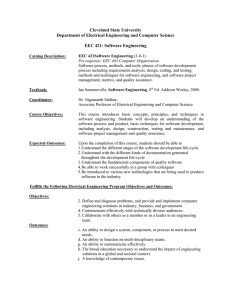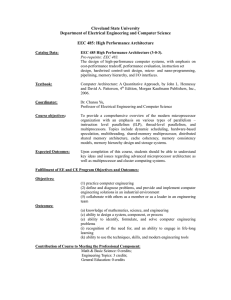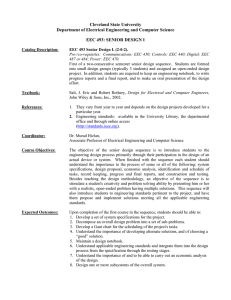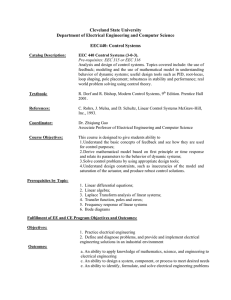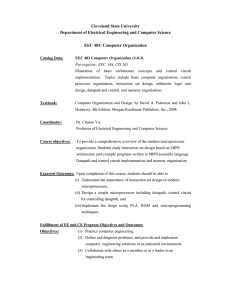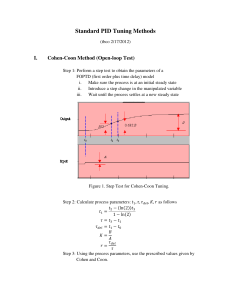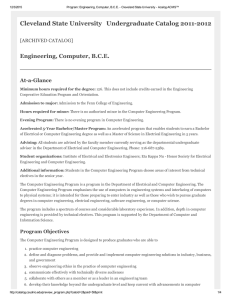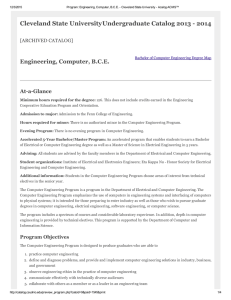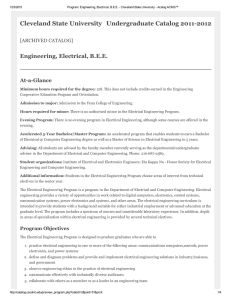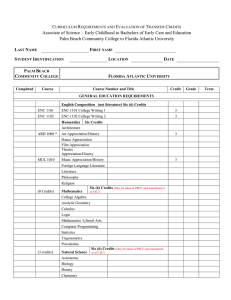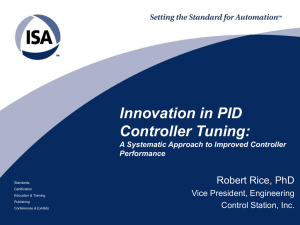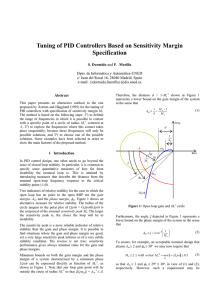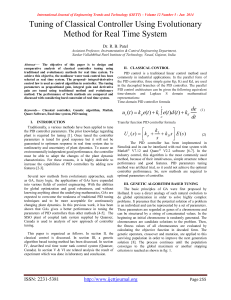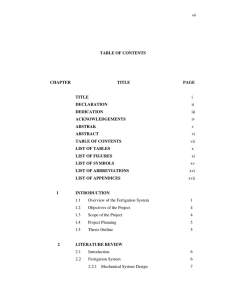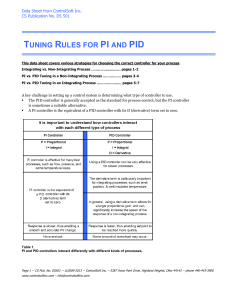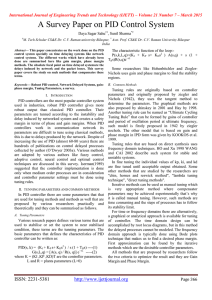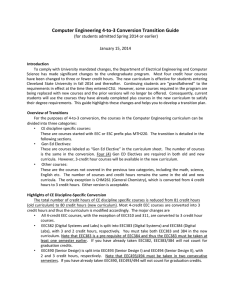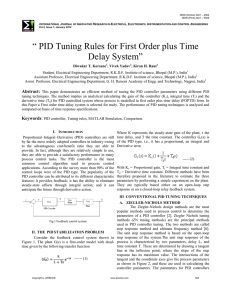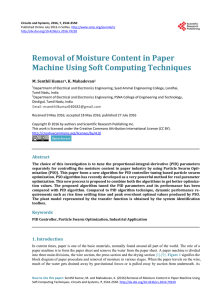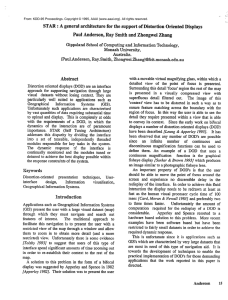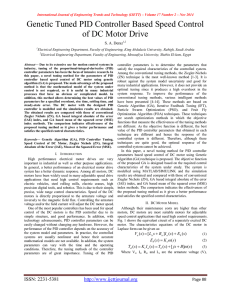Cleveland State University Department of Electrical Engineering and Computer Science
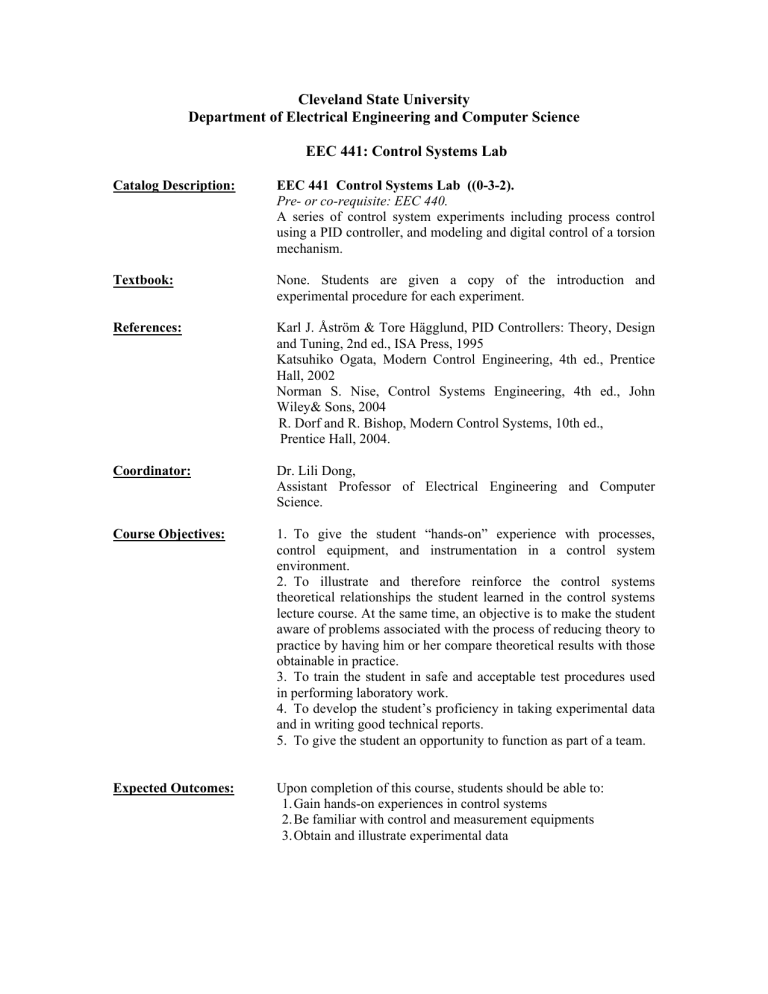
Cleveland State University
Department of Electrical Engineering and Computer Science
EEC 441: Control Systems Lab
Catalog Description: EEC 441 Control Systems Lab ((0-3-2).
Pre- or co-requisite: EEC 440.
A series of control system experiments including process control using a PID controller, and modeling and digital control of a torsion mechanism.
Textbook: None. Students are given a copy of the introduction and experimental procedure for each experiment.
References: Karl J. Åström & Tore Hägglund, PID Controllers: Theory, Design and Tuning, 2nd ed., ISA Press, 1995
Katsuhiko Ogata, Modern Control Engineering, 4th ed., Prentice
Hall, 2002
Norman S. Nise, Control Systems Engineering, 4th ed., John
Wiley& Sons, 2004
R. Dorf and R. Bishop, Modern Control Systems, 10th ed.,
Prentice Hall, 2004.
Coordinator: Dr. Lili Dong,
Assistant Professor of Electrical Engineering and Computer
Science.
Course Objectives: 1. To give the student “hands-on” experience with processes, control equipment, and instrumentation in a control system environment.
2. To illustrate and therefore reinforce the control systems theoretical relationships the student learned in the control systems lecture course. At the same time, an objective is to make the student aware of problems associated with the process of reducing theory to practice by having him or her compare theoretical results with those obtainable in practice.
3. To train the student in safe and acceptable test procedures used in performing laboratory work.
4. To develop the student’s proficiency in taking experimental data and in writing good technical reports.
5. To give the student an opportunity to function as part of a team.
Expected Outcomes: Upon completion of this course, students should be able to:
1.
Gain hands-on experiences in control systems
2.
Be familiar with control and measurement equipments
3.
Obtain and illustrate experimental data
Fulfills the Following Electrical Engineering Program Objectives and Outcomes:
Objectives: 1. Practice electrical engineering in one or more of the following
areas: communications computers, controls, power electronics, and power systems.
2. Define and diagnose problems, and provide and implement electrical engineering solutions in an industrial environment.
Outcomes: (a) An ability to apply knowledge of mathematics, science, and
engineering to general electrical engineering and, in particular, to one or more of the following areas: communications, computers, controls, power electronics, and power systems.
(c) An ability to design a system, component, or process to meet desired needs.
(e) An ability to identify, formulate, and solve electrical engineering problems.
(g) Ability to communicate effectively.
(k) An ability to use the techniques, skills, and modem engineering tools necessary for electrical engineering practice.
Contribution of Course to Meeting the Professional Component:
Math & Basic Science: 0 credits;
Engineering Topics: 4 credits;
General Education: 0 credits
Prerequisites by Topic:
1. Kirchhoff's circuit laws
2. First principle
3. Laplace and Fourier transforms
Topics:
1. The Torsion Mechanism - Familiarization and Basic Closed
Loop Control
2. First Principles Modeling of the Controlled System
3. Closed Loop Steady State Error and Transient Performance
4. Empirical Modeling of the Controlled System
5. Position Control/ Control Against Disturbances Using an
Inner Speed Loop
6. PI Control of Liquid Level, and Controller Tuning Using the
Ziegler-Nichols Tuning Method
Tests
Total:
Computer Usage: Students are expected to use Matlab/Simulink to design and simulate open-loop and closed-loop control systems.
Design Projects:
Non-Design Projects:
None
None
5
5
3
30
2
5
5
5
Prepared by:
Dr. Lili Dong
Date: Spring 2010
Revised by Dr. Xiong (added outcome (g)), Date: 7-12-11
